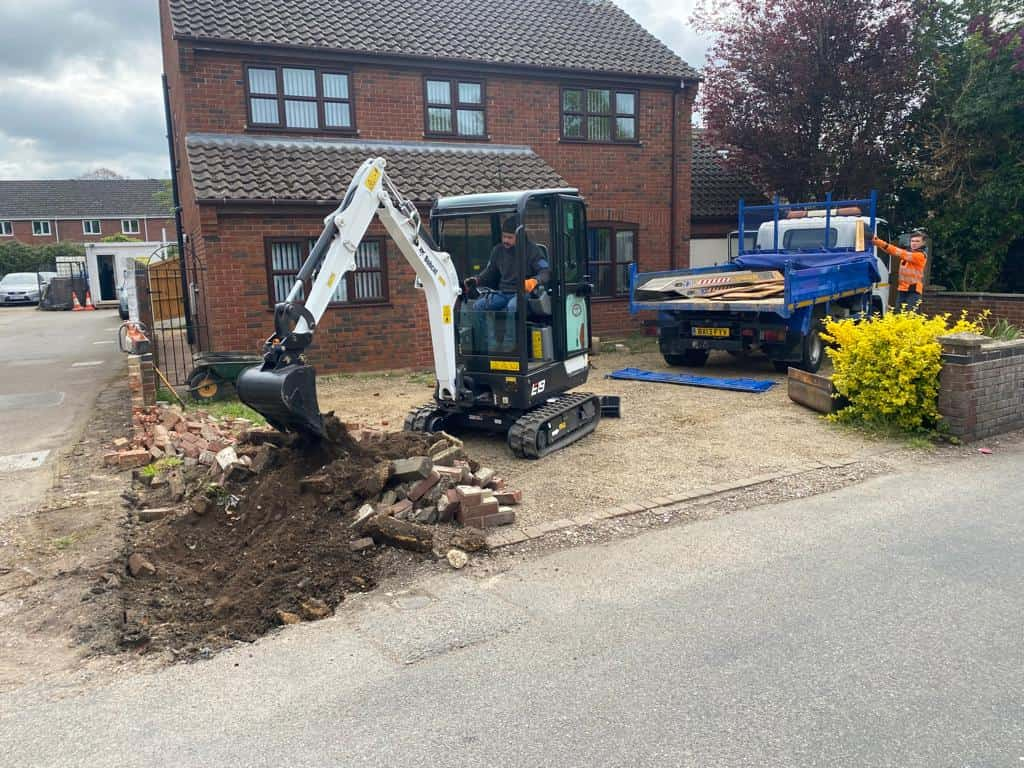How to Assess Your Current Patio for Wear & Damage — and How to Choose the Right Upgrade
A patio is one of the most versatile outdoor features of any home, providing a space for relaxation, dining, and entertaining. However, like any exterior surface, it endures constant exposure to the elements — from rain and frost to heavy foot traffic and furniture movement. Over time, even the best patios begin to show signs of wear and deterioration. At Soham Driveways, we regularly help homeowners in Soham, Cambridgeshire assess the condition of their patios and identify when an upgrade or resurfacing project is the best way to restore both beauty and functionality.
Why Regular Patio Assessments Matter
Routine checks help homeowners catch minor issues before they turn into major structural problems. Small cracks, loose slabs, or drainage issues can worsen over time, leading to costly repairs or complete replacement. Conducting a proper assessment allows you to understand the current state of your patio and decide whether minor repairs or a full upgrade are necessary.
Step-by-Step Guide to Assessing Patio Wear and Damage
1. Examine for Cracks and Surface Damage
Cracks are one of the earliest signs of patio wear. While small hairline cracks may simply result from natural expansion and contraction, larger or spreading ones could indicate movement in the sub-base or poor drainage.
- Minor Cracks: Often cosmetic but should be monitored for growth.
- Deep or Wide Cracks: Suggest underlying ground movement or settlement issues.
- Chipped Edges or Pitting: May indicate material fatigue, especially in older concrete or stone patios.
Regular inspection after harsh weather or winter frost is recommended, as temperature changes can accelerate cracking.
2. Check for Loose or Uneven Slabs
Uneven surfaces not only spoil the appearance of your patio but can also create trip hazards. Movement in paving slabs often occurs when the sub-base weakens or water penetrates beneath the surface.
- Loose Slabs: Rocking or shifting underfoot suggests that the bedding layer has deteriorated.
- Uneven Areas: Can be caused by poor installation or long-term ground movement.
- Subsidence: Look for sections that have sunk or lifted, especially near the edges or along drainage channels.
If multiple sections have become unstable, resurfacing or a full upgrade may be the most practical solution.
3. Inspect Drainage and Water Flow
Poor drainage is one of the most common causes of patio damage. Standing water or slow drainage can lead to frost damage, moss growth, and discolouration.
- Puddling Water: Indicates that the patio is not properly sloped for run-off.
- Blocked Drains: Debris or silt build-up may be preventing water from escaping.
- Water Stains: Persistent damp areas can cause surface erosion over time.
At Soham Driveways, we always ensure new patios are designed with precise grading to direct water away from the property, preventing future damage.
4. Look for Discolouration and Staining
Over time, weather exposure and organic matter such as leaves or algae can stain the surface of a patio. Oil spills, food grease, and rust from metal furniture can also leave lasting marks.
- Algae and Moss Growth: Common in shaded areas, making the surface slippery and unsafe.
- Efflorescence: White powdery deposits caused by mineral salts in the paving materials.
- Permanent Stains: May require professional cleaning or replacement of affected sections.
If your patio looks tired or discoloured even after cleaning, it might be time to consider a resurfacing option that restores a fresh, modern look.
5. Evaluate the Overall Structural Integrity
Stand back and assess your patio as a whole. Are the joints still intact? Does the design still suit your lifestyle and outdoor space? A well-laid patio should maintain stability and appeal for many years, but changes in soil, heavy use, or neglect can all affect longevity.
- Loose Joints: Missing or deteriorating jointing compound allows weed growth and weakens the structure.
- Base Layer Weakness: If large sections are sinking, the base material may no longer provide proper support.
- Age of Installation: Older patios may simply have reached the end of their service life.
Professional inspection from Soham Driveways can determine whether these issues can be repaired or if a replacement will be more cost-effective long-term.
Choosing the Right Upgrade for Your Patio
When it’s clear that your patio has seen better days, upgrading provides an opportunity to not only repair damage but also enhance your garden’s overall design. The right choice of materials and layout can completely transform your outdoor space.
1. Material Options for a Patio Upgrade
Each material offers different benefits in terms of aesthetics, maintenance, and durability.
- Block Paving: A versatile option that allows for creative patterns and colour combinations.
- Resin-Bound Stone: Provides a seamless, modern finish with excellent drainage properties.
- Natural Stone Slabs: Timeless elegance, perfect for traditional properties.
- Concrete Paving: Cost-effective and available in various textures and finishes.
A professional consultation can help you select the most suitable option based on your property’s style and functional needs.
2. Consider Functionality and Lifestyle
Your patio should reflect how you use your outdoor space. Do you entertain guests, host barbecues, or simply enjoy quiet relaxation? Understanding how the area will be used influences both the material choice and design.
- For Entertaining: Opt for larger paved areas with durable surfaces.
- For Low Maintenance: Resin-bound or sealed surfaces resist moss and staining.
- For Visual Appeal: Incorporate mixed textures, edging, or contrasting materials.
Soham Driveways can design patios that balance beauty, durability, and practicality — ensuring the upgrade fits seamlessly with your home and garden.
3. Add Modern Features for Long-Term Value
Upgrading your patio is also a chance to include enhancements that increase usability and appeal.
- Integrated lighting for evening use
- Raised flower borders or seating walls
- Defined pathways linking driveways and garden features
- Anti-slip finishes for safety in all weather conditions
These additions not only elevate aesthetics but also improve functionality, making your garden space more enjoyable year-round.
The Importance of Professional Installation
While small patio repairs can sometimes be done independently, full upgrades and structural corrections require professional expertise. Skilled installers like Soham Driveways ensure that proper groundwork, sub-base preparation, and drainage systems are in place before any paving is laid. This guarantees longevity, stability, and a visually flawless finish that stands up to British weather conditions.
Maintaining Your Upgraded Patio
Once your new patio is installed, a simple maintenance routine will keep it looking its best for years.
- Sweep regularly to prevent debris build-up.
- Rinse or pressure wash periodically to remove algae.
- Check jointing and drainage annually.
- Apply sealant if recommended for your chosen material.
Regular maintenance preserves colour, prevents movement, and helps protect your investment in the long term.
Conclusion
Assessing your patio for wear and damage is an essential step in maintaining a safe, attractive, and functional outdoor space. From identifying cracks and uneven surfaces to evaluating drainage and design, each aspect helps determine whether repairs or a full upgrade are needed. For homeowners in Soham looking to revitalise their outdoor living areas, Soham Driveways provides professional guidance, expert installation, and premium materials to ensure your new patio enhances both your property’s value and your everyday enjoyment.
Call us on: 01353 881 093
Click here to find out more about Soham Driveways
Click here to complete our contact form and see how we can help with your driveway needs.

